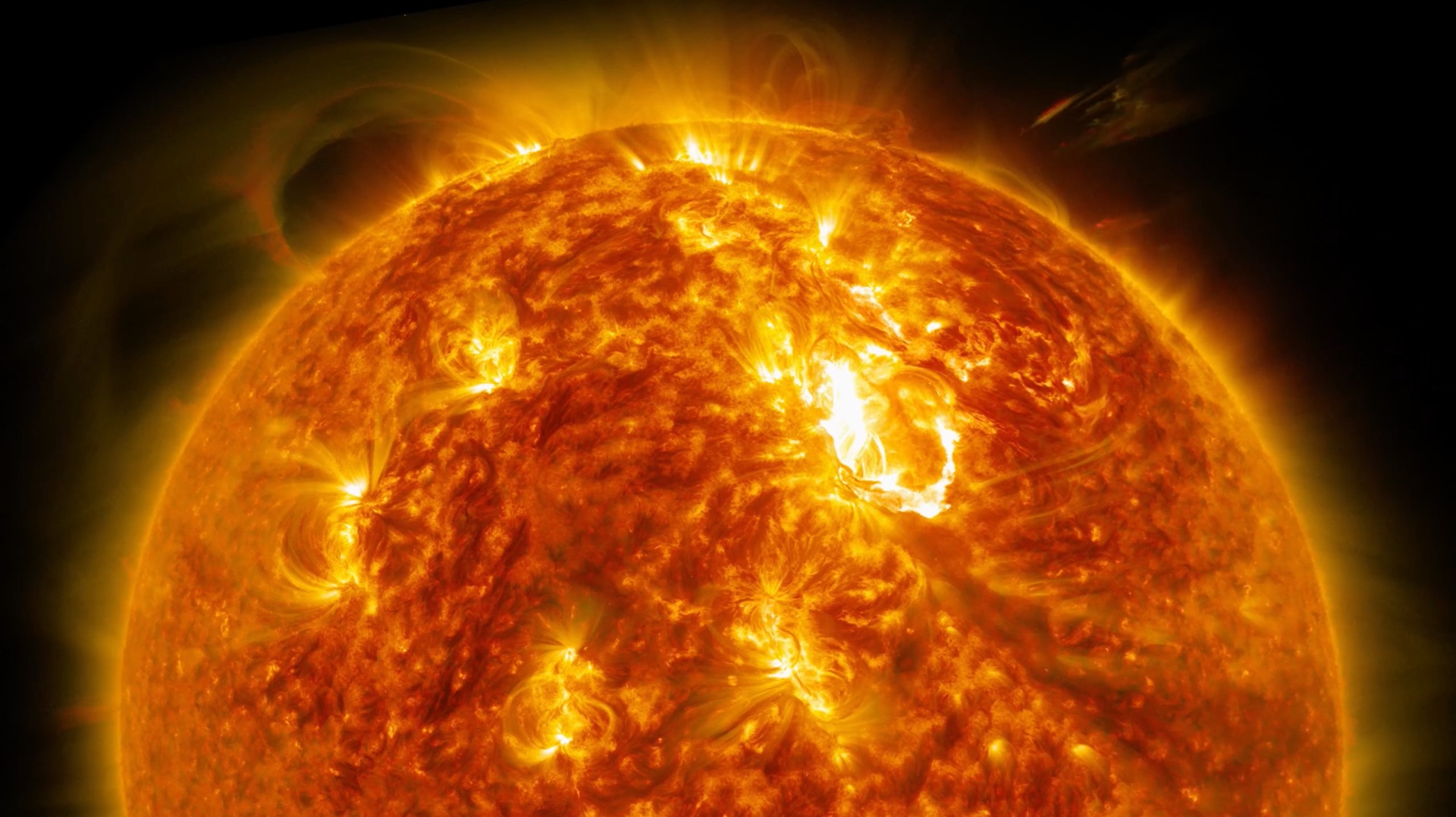Scientists say a recent period of strong solar flares is expected to slowly calm down over the next few weeks and months. As the sun’s current solar cycle begins to wind down, there may still be short communication blackouts.
The strongest solar flare of 2025 so far was seen last week by NASA and the U.S. National Oceanic and Atmospheric Administration (NOAA). This flare was ranked as an X2.7, one of the highest levels, and caused about 10 minutes of disrupted radio communication in the Middle East, according to NOAA.
“We are at the solar maximum, which means the sun is at its most active,” a spokesperson from NOAA’s Space Weather Prediction Center said in an email to Global News. They added that the area of the sun that caused last week’s flare has weakened, so another big flare is now less likely, although still possible.
What are solar flares?
Solar flares are powerful bursts of energy from the sun’s surface. Scientists rate them using letters — A, B, C, M, and X — with X being the strongest. The number that follows shows how strong the flare is. For example, an X2.7 is stronger than an X1.2.
The X2.7 flare happened on May 14, just one day after an X1.2 flare was spotted in a nearby area. That more active region is now turning to face Earth. The Middle East experienced a short blackout because it was facing the sun at the time of the flare.
However, since the flare came from a region that wasn’t directly facing Earth, the coronal mass ejection — a powerful burst of plasma and magnetic energy — did not hit our planet.
Taylor Cameron, a space weather expert at the Canadian Hazards Information Service, explained that it’s hard to predict exactly when and where solar flares will happen or what part of Earth they’ll affect.
Right now, the sun is at the peak of its 11-year cycle, called the solar maximum. Even though things may slow down, the Space Weather Prediction Center says we can still expect more sunspot activity and solar flares this year and possibly into 2026.
NASA says solar flares and eruptions can affect radio communications, power grids, GPS systems, and can even be dangerous for satellites and astronauts.
Cameron explained that solar flares mainly affect high-frequency radio waves, like ham radios, shortwave broadcasts, airplane communications, and radar systems. Other tech, like the internet, 5G, and cellphone service, usually isn’t affected.
The stronger the flare, the worse and longer the communication problems can be.
So far, the strongest flare in this solar cycle was an X9.0 last October, which was strong enough to cause faint northern lights in parts of North America. Another strong solar storm last spring created even brighter northern lights across much of Canada.
In recent months, NOAA has reported several short radio blackouts caused by more X-class solar flares.


